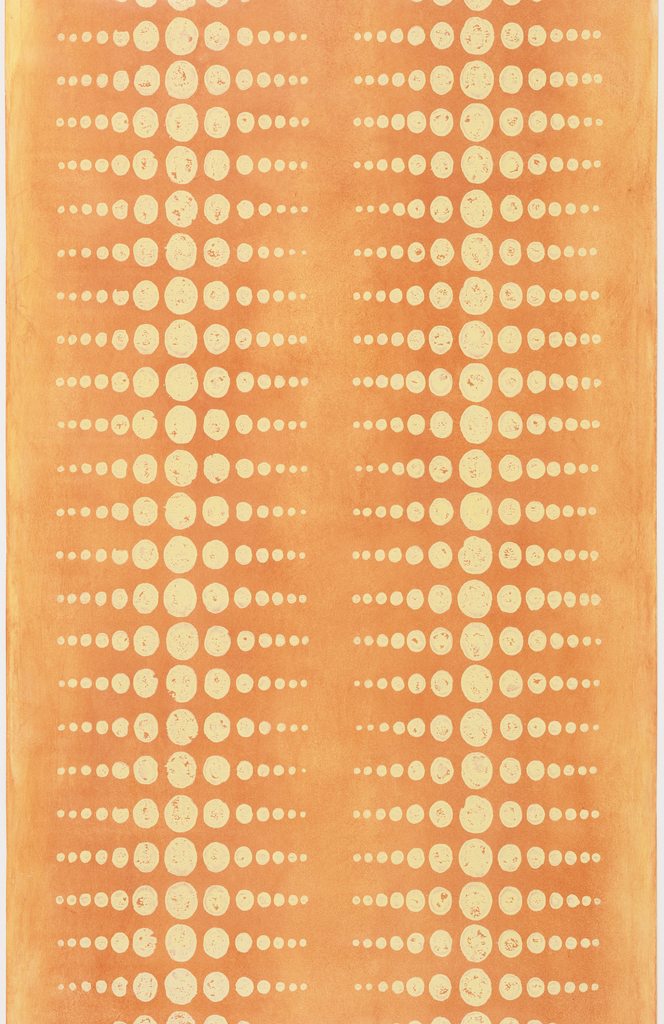In celebration of World Pride, June Object of the Day posts highlight LGBTQ+ designers and design in the collection. Infinity is a pattern of dots that scale from small to large back to small, printed in two columns across the width. When seen from a distance the design is slightly reminiscent of crocodile hide. I...
This blog post was originally published on January 8, 2014. By the 1930s, the vast majority of American urban dwellers had access to electricity in their homes and businesses. But those in impoverished rural areas were often not serviced by private electric companies, who believed that it was not cost-effective for them to invest in...
Whatever would William Morris think? How would he feel seeing how this clever sidewall takes his beloved wallpaper design (the first he ever created) and stylizes it into a series of dots? Whether it brings to mind the Ben Day dots used in comic books or an LED display, the result seems to have been...
Wool Dot Gather, designed by Osamu Mita and manufactured at his family’s textile company, Mitasho, is made of wool and rayon. The textile has a very rich textural surface created by a combination of patterning in the weaving process, as well as shrinking in the finishing. The white plain woven wool forms both the dots...
Gerd Göran’s Slån wallpaper design shows pale blue dots arranged in rows within an irregular, light-gray net on white ground. The pattern is at first reminiscent of bubble wrap, or maybe even caviar, if you’re feeling fancy. Swedish speakers, however, might realize that the name of the paper hints at the designer’s inspiration. Slån (sloe,...
Pretty and pleasant, this unassuming wallpaper plays an important role in the scholarship of early American design. In 1821 Adrian Janes and Edwin Bolles opened a wallpaper business (creatively named Janes & Bolles) in the bustling industry town of Hartford Connecticut. In the American Mercury, June 1st 1824, they advertised they had an “extensive assortment...
Infinity is a pattern of dots that scale from small to large back to small, printed in two columns across the width. When seen from a distance the design is slightly reminiscent of crocodile hide. I find a great energy in this crescendo of dots over the ground painted with a mottled finish, and the...
By the 1930s, the vast majority of American urban dwellers had access to electricity in their homes and businesses. But those in impoverished rural areas were often not serviced by private electric companies, who believed that it was not cost-effective for them to invest in extending power lines into areas of the country that would...







